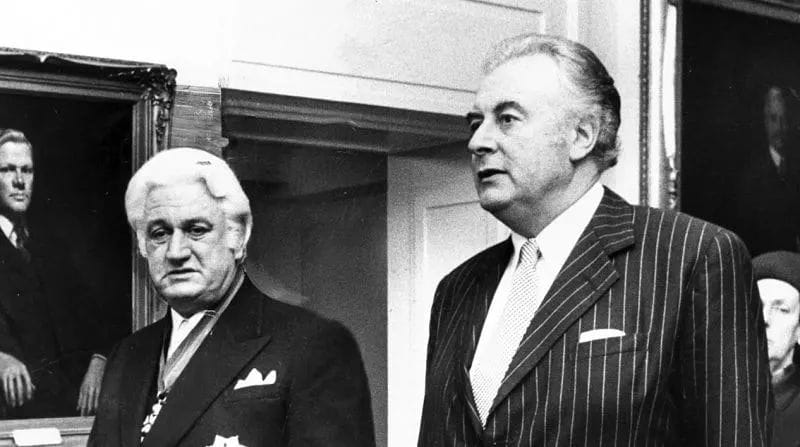
The initial deadline for four million Australians to receive their first COVID-19 vaccination is long gone, and with growing vaccine hesitancy, so are future government targets.
The federal government had initially pledged to have all Australians vaccinated by October, but Prime Minister Scott Morrison now says it “would like to see these doses completed before the end of the year”, without setting any firm timeline.
“It is not possible to set such targets given the many uncertainties involved,” he says. “We’ll just get on with the job of working together to produce, distribute, and administer the vaccine as safely and efficiently as possible.”
So far, with 3,613,053 vaccinations administered at time of writing, and a weekly rolling average of 46,000 doses, the rollout will take an extra two-and-a-half years to cover the full population.
Australians still stranded away from home, expats hoping to see their families again, and many businesses are growing frustrated with the lack of clarity, and uniting their voices to call for border restrictions to be eased.
Yet, medical experts warn that reopening borders before 70-80% of the population is vaccinated would likely lead to a third wave.

Rollout in the slow lane
So, why is the vaccination campaign going this slow?
Securing access to vaccine supply seems to not be the key issue slowing operations – Australia has purchased 40 million doses of Pfizer-BioNTech, and 54 million doses of Oxford-AstraZeneca.
Two key reasons for this delay lie at the structural and communication levels.
At the structural level, the vaccination rollout happens in phases – non-eligible citizens cannot decide to get vaccinated before the phase they’re allocated to, no matter how proactive they are.
The good news is that since 17 May, people aged 50-plus can receive AstraZeneca from GPs, which may speed operations.
The vaccination is, however, voluntary. Bar a minority of hopeless minus habens (from Latin, “having less”, in this case common sense) such as anti-vaxxers and conspiracy theorists, leaving the choice to the individual means great efforts need to be made to inform and persuade.
Read more: The waiting game: Why are so many people hesitant about COVID-19 vaccines?
This brings me to the second issue lying at the communication level.
The $24 million advertising campaign rolled out by the federal government has focused on expert endorsement of a vaccine that’s safe, effective, and free.
This is a good start – a large study of public acceptability in the US shows that reassuring people about vaccine effectiveness and lack of major adverse effects are the two major determinants of motivation to get vaccinated.
This information, expert-endorsed, top-down approach is a necessary step to raise awareness and dispel fears, but isn’t sufficient.
There’s a general concern related to adverse effects of the AstraZeneca vaccine and the risk of thrombosis, and the current hyper-informative approach adopted by the Department of Health may not have the intended effects.
The amount of information provided on the government’s AstraZeneca vaccine webpage is comprehensive but daunting – a wall of text that’s undoubtedly informative, but hard to digest.
Even when provided with risk statistics, most people lack a reference point to make them meaningful.
Clearly convey the risk
One way to clearly convey risk is to frame it properly and put it in perspective.
In health communication, a one-in-a-million chance of death is called micromort, and is commonly used to communicate the risk associated with an activity. In the UK, 41 people in 22 million died as a result of blood clots after taking the AstraZeneca vaccine. This means an AstraZeneca jab has a 1.86 micromort.
Absent a reference point, most people still struggle to make sense of this data. People may counter-argue that close to two deaths in a million is still too much. What if those were your parents, or your children?
Read more: COVID-19: Age-old preventive measures still needed even after coronavirus vaccination rollout
These are fair points hard to dismiss – unless we put things in perspective.
Getting a vaccination is voluntary. So are many activities we engage in on a day-to-day basis, and yet no one tells us the risks associated.
Are you planning a hike in Europe, maybe climbing the iconic Matterhorn in Zermatt? That’s about 20 micromorts for the return flight, and 2840 micromort for the ascent attempt.
Perhaps a more relaxing holiday to Bali, with some scuba diving? Still 5.56 micromorts per return flight, and 10 micromorts for each dive.
“A day trip to the outback, then!” Driving 370km (1 micromort) and approaching a pack of nine kangaroos (0.9 micromort) gives you a higher micromort probability of taking the AstraZeneca vaccine.
And yet we keep doing things, because no one constantly reminds us of the inherent risk associated with everything we do.
Using social media to tailor the message
The issue of clearly conveying risk comparatively may become even more problematic in later stages when addressing the younger portion of the population, who are less vulnerable to COVID-19, but more vulnerable to the adverse effects of AstraZeneca.
A comparative risk campaign through social media may help increase vaccination motivation for a segment that’s increasingly cynical and counter-argumentative.
Social media platforms allow for personalised targeting, such that messages can be tailored to convey the most relevant information for a specific population, maximising message persuasion.
Coupled with comparative risk statistics, such a communication campaign may help put things in perspective.
After all, drinking four pints of beer has approximately the same micromort of getting an AstraZeneca jab.





